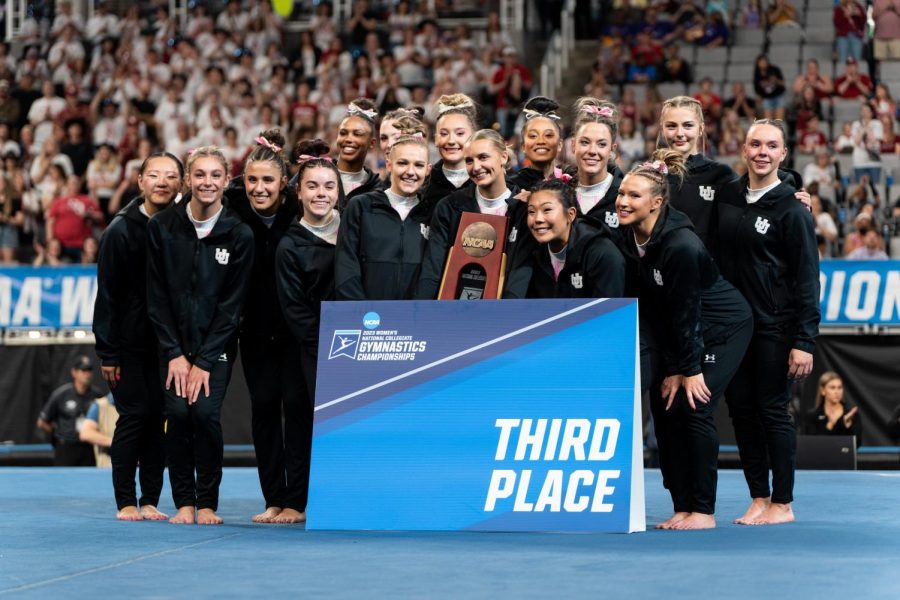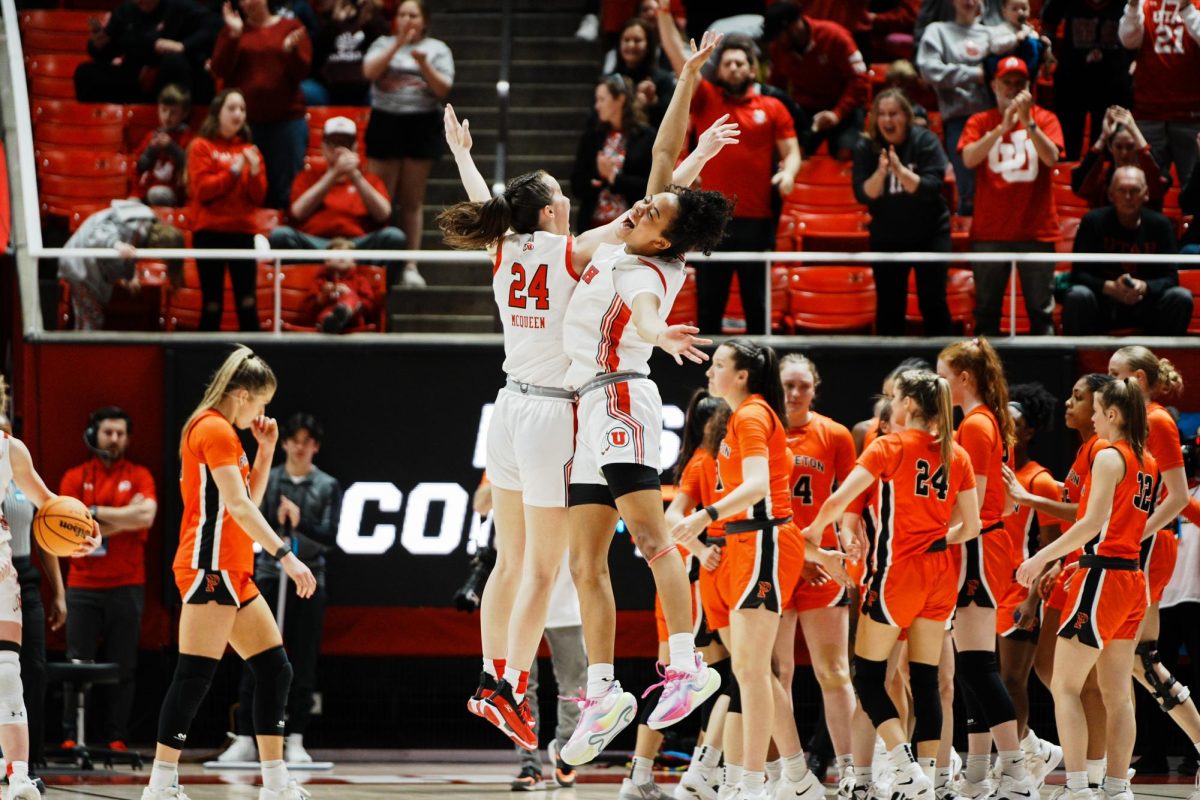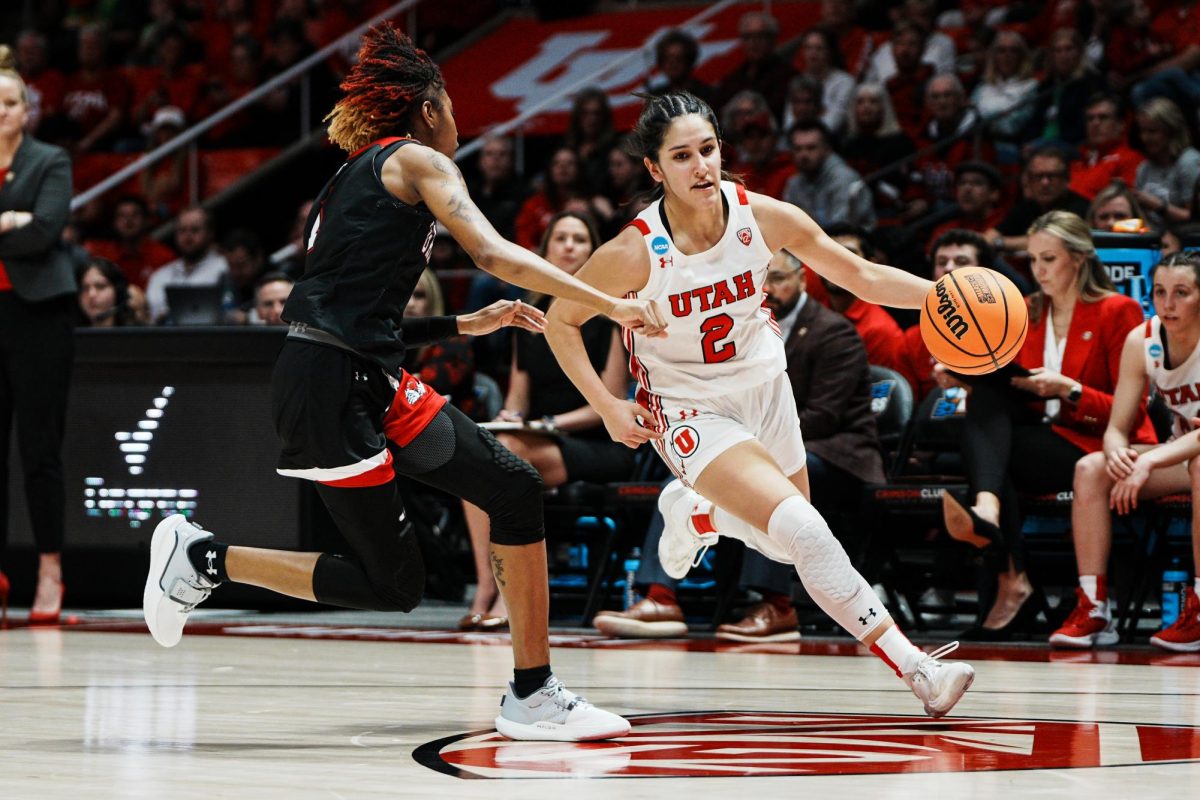In June 1972, Title IX of the Civil Rights Act was signed into law. Title IX protects individuals from discrimination based on sex in any sort of school or education program that receives funding from the federal government.
Specifically, these provisions of Title IX mean that U.S. educational institutions must treat men’s and women’s sports, and their respective athletes, equally, whether that be access to sports facilities, equipment or any other sort of assistance from the educational institution.
The University of Utah, being an educational institution that receives federal funding, abides by these rules as well. Fortunately enough, the university has done strong work over the last fifty years to make the school’s college athletics more inclusive.
Just last summer, the U celebrated the 50-year anniversary of Title IX by sharing features of some of the incredible female athletes within the school. As of 2023, the U has 11 female collegiate teams, all founded within the lifetime of Title IX.
These teams include tennis, basketball, volleyball, gymnastics, skiing, softball, cross country, track & field, swimming & diving, soccer and beach volleyball.
Not only does the U have a strong number of women’s sports teams, but these teams have yielded incredible results. Just this year, the gymnastics team won the Pac-12 Championship and placed third in the country at nationals, and the basketball team won the Pac-12 Championship and made it to the NCAA Sweet Sixteen. Each team helped the women’s sports teams at the U garner strong national exposure.

Developing a women’s sports program is not just about recruiting the best athletes, though. It is also vital for the university to ensure they are following Title IX and treating both male and female athletes equally.
Junior Chloe Shewell is a track and field star who doubles as the U’s Student Body Vice President of University Relations.
When asked about the university and men’s and women’s athletics, Shewell said that it is “extremely important” that both are equally prioritized.
“Especially at our university, we are lucky to have such talented teams across all sports,” Shewell said. “Their success should be supported regardless of being a men’s or women’s team.”
However, it is important to reiterate Title IX on its own does not automatically mean all schools will approach equality in sports perfectly. Educational institutions must ensure they are actually practicing equality in this sphere. Luckily, Shewell sees the U doing just this.
Shewell shared that in her time at the U, she has seen it support sports teams for both men and women. She specifically noticed that the U supports teams’ “success,” regardless of the sex of the team.
“Being a women’s student-athlete, I have felt supported by our athletics teams, staff and university members,” Shewell said.
Shewell has noticed and appreciated specific actions of the U and the various departments within it that have best-supported women’s sports. Whether it’s daily recognition through improving media coverage, or doing a better job of encouraging students to attend events of and cheer on all athletic teams, she believes that the U has made a real and genuine effort to give women’s sports teams the support they deserve.
However, Shewell realizes that support cannot end at the university and its administrators. Ultimately, the student body, alumni and all fans play a vital role in the success of college athletic teams, and Shewell pointed out ways that these individuals can help.
“University students and fans can better support women’s sports simply by showing up,” she said. “Women’s sports are growing in popularity, but are still in need of support.”
She went on to explain that attendance, and strong engagement from the crowd, are things that truly make a difference for individual athletes, teams and their performances. Supporting our teams not only is a great way to get involved on campus, but also makes a positive impact on them.
At the end of the day, Title IX was passed fifty years ago, and the U has come a long way in promoting equality within sports. However, there is still much work to be done. Just in 2021, NPR found that the NCAA spends per average $4,285 on Division I male athletes, but just $2,585 on Division I women athletes. Progress has occurred, but this disparity is evidence that the journey to equality is not complete.
The U must continue to make an effort to bridge the equality gap between men’s and women’s sports, and even more importantly, students must continue to give positive support and engagement to all sports teams at the school. Only then can the journey to equality within college athletics approach a better future.





